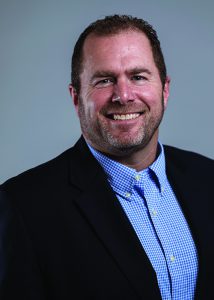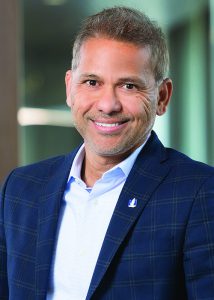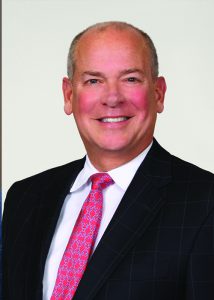Stop loss executives foresee strong growth
By Thomas A. McCoy
The importance of having relevant data in making decisions rises in proportion to the amount of money at stake. Thus, when their health benefits costs rise to a certain point, employers become more interested in self-funding because it gives them access to targeted data about those costs. This data access can lead to better decision making.
It’s a bit like the situation that baseball managers find themselves in. When player salaries and other costs were much lower, a manager could afford to trust his gut. Now he wants every scrap of analytics he can get. When he sends a relief pitcher to the mound in the late innings, he’s got data on his side.
Medical stop loss insurers work closely with benefits brokers in establishing self-insured plans and backstopping them for high-dollar claims. Claims and cost data is their strength. They report a growing interest in self-funding from employers of all sizes.
Syed Rizvi is vice president, specialty insurance, for Nationwide, which writes stop loss business through nine managing general underwriters. The MGUs, in turn, work with more than 500 brokers. Rizvi notes that self-funding took off after the passage of the Affordable Care Act in 2010. “Since then, the industry’s stop loss premium growth has averaged about 13% per year.
“Nationwide’s growth over the last 20 years has averaged about twice that rate,” Rizvi says, as we’ve gradually expanded the number of MGUs we work with for stop loss. Today we write a total of about $335 million in annual medical stop loss premium. We anticipate reaching $1 billion annually in the next three to five years.
“The market we serve for stop loss is primarily small to mid-sized employers, so our stop loss business comes from independent retail brokers, rather than the publicly owned national brokers,” Rizvi explains. “Smaller employers, just like larger ones, can see the benefit of having access to data and greater control over claims costs that comes with self-funding.
“Also, in the last five years, there have been more stop loss product offerings that cater to the small and mid-sized market, including level-funded plans,” he says.
John Thornton, executive vice president, sales and marketing for Amalgamated Life Insurance Company, agrees that smaller employers are increasingly being drawn to self-insurance. “They recognize, just as larger employers first did, the value of owning their own data. This helps them to analyze their claims costs, thereby guiding them toward more informed decisions to contain costs and risks,” he says.
Dean O’Toole, managing director of One80 Intermediaries, a national wholesaler and program manager, says, “The industry as a whole has seen tremendous growth in medical stop loss.” One80 provides access to medical stop loss insurance through two specialty underwriters, Vista Underwriting Partners and National Underwriting Services.
Nick Milligan, national medical stop loss practice leader for One80 Intermediaries, adds, “Our annual stop loss premiums have grown from approximately $110 million in 2020 to around $150 million today. We’ve also increased the number of organizations we partner with for stop loss business to around 60 brokers and TPAs.
“Our concentration is on employers with 400 to 500 employees, and their average stop loss premium is around $500,000.
“We do write stop loss for some small employers,” Milligan continues. “Small employers often will spend a year exploring the option of self-funding. In year two or three, they become more open to the idea of proceeding.”
One tool that One80 uses with its small employer clients is reference-based pricing (RBP)—where claims payments are pegged to levels determined by Medicare payment levels. It uses RBP for about 25% of its customers, mostly small employers.
Thornton says Amalgamated supports its brokers by providing data to help their clients determine if a self-funded plan is a better option than a fully insured plan. Unfortunately, he and other stop loss executives point out, most fully insured carriers are reluctant to release data to support the switch to self-funding.
“They typically use HIPAA as the reason,” Thornton says. “Yet, TPAs and stop loss carriers are much more inclined to collaborate with plan sponsors and consultants in providing the data needed to do a proper comparison.
“HIPAA is clear that personal health information may be used by plan sponsors to manage their plans by having the proper security protocols in place, such as secure emails, business associate agreements and non-disclosure agreements. It is in the best interest of the plan sponsor if all parties have the necessary data to offer an accurate and educated quote,” Thornton states.

“In some ways, artificial intelligence will definitely help in the data gathering process, making it easier for fully insured employers
to explore self-funding.”
—Nick Milligan
National Medical Stop Loss Practice Leader
One80 Intermediaries
Artificial intelligence
Stop loss executives foresee a promising future for artificial intelligence in the self-funded space. As is common in other parts of the business world, their enthusiasm is tempered with a word of caution about AI’s possible misuse.
“In some ways, artificial intelligence will definitely help in the data gathering process, making it easier for fully insured employers to explore self-funding,” says Milligan. “At the same time, individual employers may have privacy concerns about how much data they want to know about their employees.”
Rizvi says, “Generative AI is the most exciting thing that is happening in stop loss. The first place we’re seeing people utilize and experiment with it is in the small end of the market, where underwriting can be automated. We are experimenting with using the portal of two or three AI providers to see how predictive they are.
“This can be useful when converting an employer to self-funding from a fully insured plan and the existing carrier doesn’t want to provide us with data,” he notes.
“We are looking closely at the compliance aspects of AI,” Rizvi continues. “The Departments of Insurance are checking to make sure that the use of AI isn’t discriminatory in any way. AI is the future, and it’s where we want to go, but we need to do it thoughtfully and carefully to make sure we do it the right way.”

“In the last five years,
there have been more stop loss product offerings that cater to the small and mid-sized market, including level-funded plans.”
—Syed Rizvi
Vice President, Specialty Insurance
Nationwide
Thornton points out, “Besides helping organizations capture and mine their health/medical data, generative AI has significant uses
on the administrative side. It can be used in claims processing, to manage security, privacy and fraud risks, and to prevent bias discrimination.
“AI is not without its risks, however,” Thornton warns. “In the hands of cybercriminals, AI can be used to generate phishing emails, automate cyberattacks, exploit system vulnerabilities and develop complex malware codes. The risks have prompted many organizations to create new risk management standards. For example, the National Institute of Standards and Technology (NIST) developed an AI Risk Management Framework.”
Medical claims
Many of the medical conditions that produce high-dollar claims are ones that stop loss insurers have been dealing with for a long time. Then, there are new ones related to pioneering developments in medical treatments.

Rizvi says, “Overall medical inflation has been rising at a rate of 7% to 8%, but higher-dollar claims—those of over $500,000 or $1 million—have been going up at a faster rate. Some of it is driven by specialty drugs as more of them have been approved by the FDA, giving patients access to those drugs.
Thornton notes, “Many states are now considering drug price boards which could set upper payment limits for certain prescription drugs. Among those being targeted for affordability are those therapeutic drugs for rheumatoid arthritis, HIV and select autoimmune conditions.”
Rizvi adds, “What continue to be the biggest drivers of high-dollar claims are premature babies, cancer treatments and hemophilia. Another driver going forward is the additional gene therapies being approved. There are about 10 that have been approved so far, but there are more than 100 in different clinical trials. As they get approved, what will it do to high-dollar claims for employers?
“We are at the nascent stage of dealing with gene therapies,” Rizvi continues, and it’s being covered under regular stop loss approaches. But we’re heading toward a time when there will need to be some kind of a carve-out, or pooled insurance mechanism for this risk.”
Milligan says, “It’s exciting to think about the potential cures that some of these gene therapies could bring. In the next 12 to 18 months the marketplace will be moving toward figuring out ways to insure the risk.”
Another emerging drug risk that the stop loss executives say is yet to be fully evaluated is new weight-loss drugs—as they become approved for medical use. “Plan sponsors that do decide to provide coverage can expect higher overall medical expenses whether they are fully- or self-insured,” says Thornton.
“Where applicable, some plan sponsors will elect to apply cost controls such as annual or lifetime maximums for the cost of these drugs. Many see the benefit these drugs may bring in improving their employees’ wellness by reducing the risks of Type 2 diabetes, cancer and heart conditions,” Thornton points out.
Use of captives
One way a self-insured program can be constructed is by utilizing a captive. For smaller employers, a group captive enables them to pool their stop loss risk with other similar-sized businesses. Rizvi explains how one small law firm used a group captive in converting to self-insurance.
“About two years ago, because of continuing rate increases for its fully insured program, this employer decided to look into self-funding. Since it is a smaller employer, it made sense for their broker to place the stop loss coverage in a group captive through one of our MGUs.
Two years later, Rizvi says, “The head of the law firm has been thrilled with the claims experience of the group captive, the refunds they’ve been getting and how much their cost has come down. It shows that if you have a healthy population, you may not get the benefit if you are fully insured, but if you are self-insured, you can start seeing it right away.”

“The right combination of options in the stop loss program can produce a strong ROI for the employer.”
—John Thornton
Executive Vice President, Sales and Marketing
Amalgamated Life Insurance Company
Nationwide, through several of its MGU partners, also provides a stop loss market for large employers using single-parent captives. These large employers create their own captive and retain more risk, gaining some tax advantages, Rizvi explains.
In the end, self-funding of a medical plan, accompanied by stop loss insurance, is all about giving an employer access to its specific health cost data, so it can build a tailored, cost-effective program. “The right combination of options in the stop loss program can produce a strong ROI for the employer,” Thornton says.

Among those options, he points out, are both specific and aggregate stop loss policies and a laser for one or more employees that pose a high-cost risk due to their medical condition. Plan sponsors also can add aggressive cost containment strategies and specific carve-outs to reduce their exposure on specialty prescriptions and other high claims, such as renal care and transplants.
“The flexibility of a self-insured plan lets a plan sponsor add or remove certain benefits to meet its budget while accommodating its employees’ wellness needs and remaining in compliance,” says Thornton.
For more information:
Amalgamated Life Insurance
Company
amalgamatedbenefits.com
Nationwide
nationwide.com
One80 Intermediaries
one80.com
The author
Thomas A. McCoy, CLU, is an Indiana-based freelance insurance writer






